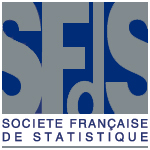Estimateurs doublement robustes avec apprentissage automatique pour l’estimation de l'hétérogénéité de l’effet traitement dans les modèles à variables instrumentales
Résumé
We consider the estimation of the average treatment effect in the treated as a function of baseline covariates, where there is a valid (conditional) instrument. We describe two doubly-robust (DR) estimators: a g-estimator and a targeted minimum loss-based estimator (TMLE). These estimators can be viewed as generalisations of the two-stage least squares (TSLS) method to semi-parametric models that make weaker assumptions. We exploit recent theoretical results and use data-adaptive estimation of the nuisance parameters for the g-estimator. A simulation study is used to compare standard TSLS with the two DR estimators’ finite-sample performance when using (1) parametric or (2) data-adaptive estimation of the nuisance parameters. Data-adaptive DR estimators have lower bias and improved coverage, when compared to incorrectly specified parametric DR estimators and TSLS. When the parametric model for the treatment effect curve is correctly specified, the g-estimator outperforms all others, but when this model is misspecified, TMLE performs best, while TSLS can result in large biases and zero coverage. The methods are also applied to the COPERS (COping with persistent Pain, Effectiveness Research in Self-management) trial to make inferences about the causal effect of treatment actually received, and the extent to which this is modified by depression at baseline.

